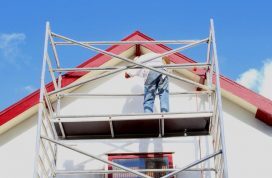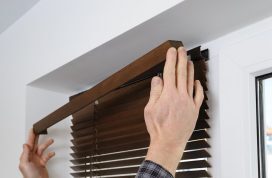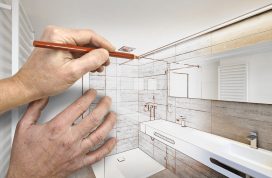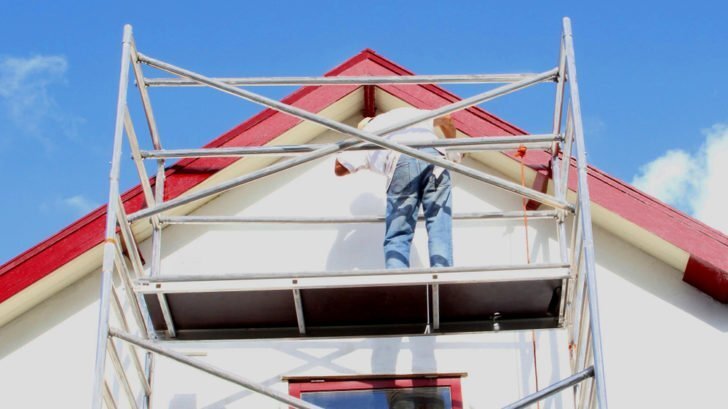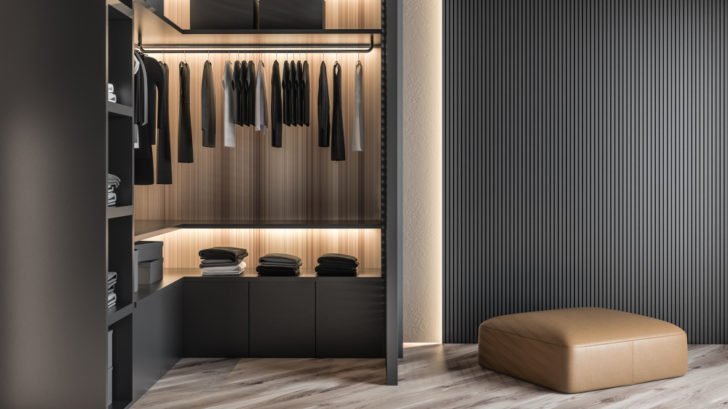While working from high buildings, safety should be a priority. Before starting any construction, it is crucial to set up the scaffolds to ensure the worker’s comfort and safety while working from a high place.
A scaffold is a structure with platforms and offers total support for workers working on high buildings. In addition, you can use scaffolds to clean the exterior of your home.
This guide will discuss the different types of scaffolds, the pros and cons of a scaffold, and scaffold safety and regulation.
Types of scaffold
There are different types of building a construction scaffold. Some are made out of metal, while the majority are from wood. Wood is preferred because it’s cheaper, flexible and easy to install an extra room compared to metal. In addition, it’s easy to replace a wooden scaffold.
Most tradesmen opt to hire scaffolding equipment and services as it’s cheaper and more manageable. Below are some of the types of scaffolds:
- Kwikstage scaffolding
Kwikstage scaffolding is a modular scaffolding system made from prefabricated individual components, including galvanised steel. It’s standard on buildings with a traditional facade, directional bridges or angular and complex buildings. In addition, the structure is flexible and versatile to sculpt itself to the shape of the building.
It’s becoming increasingly popular in the field of construction and engineering because of some of the following reasons:
Fast to set up
The assembly process is fast and easy. It also requires fewer workers, therefore saving time and labour costs.
It’s versatile and flexible.
The system is designed to adapt the accommodation of the various applications easy. It has a wide array of components that allow the setting up of structures to be easily adjustable.
It’s multi-purpose
Since it can mould itself into the shape of the built structure, it creates no complication when making an angular or arch.
- Single Scaffolding
It’s also known as bricklayers scaffolding as brick masons typically use it. It consists of ledgers, standards and putlogs. They are temporarily constructed parallel to the wall being worked on, approximately 1.2m from the wall.
Standards are a sequence of vertical materials, either bamboo or timber, that you firmly fix to the ground parallel to the wall you’re constructing. The interval separating them is usually between 2 to 2.5m and 1.2 m from the wall.
The ledgers, also known as horizontal longitudinal components, connect to the standards at vertical intervals of 1.2m- 1.5m. They are then tied with standards using rope lashing at every 4feet to 5 feet.
The other class of components is the putlogs. First, join them from one end of the scaffolding ledger to the other end of the hole left on the wall. After that, fasten with ledgers using rope lashing. Finally, space them on intervals of 1.2m to 1.5m.
- Steel scaffolding
It’s the most common type of scaffolding as it has been around for thousands of years, dating to the time of the construction of the pyramids. However, more recently the scaffolding has been made from pure steel.
Steel scaffolding or staging allows construction workers or cleaners of high buildings to conveniently work in a safe space with easy access to their tools. They have three essential structural elements, that are;
- Transoms – they strengthen and offer more support to the platforms. You can place them on different levels of the scaffold simultaneously.
- Standards – Are all balanced on a square base plate to spread the weight and reduce collapsing risk. Aluminium tubes or vertical steel are placed throughout the structure to hold it up and offer support.
- Ledgers – These are horizontal tubes that connect the standards and provide further structural balance.
Steel scaffolding comes in three formats;
- Rolling scaffolding – Built from the ground up with castor wheels on the base to move the scaffold to different areas where the structure is needed.
- Supported scaffolding – This is the most common type of scaffold. It’s also built from the ground and considered the most convenient and safest.
- Suspended scaffolding – This type of scaffold hangs from the roof of a building. It’s commonly used in places where the ground space is limited or inaccessible.
- Double scaffolding
It’s comparable to the single scaffolding but used by the stonemasons. They derive their name from the two rows of single scaffolds placed together to create a sturdy frame. Compared to the single scaffold, masons prefer the double scaffold as it’s more stable and more robust.
- Cantilever scaffolding
It’s also referred to as the needle scaffold and is highly cost-effective and time-saving. Install it if;
- The construction is required to be at a high height.
- The construction project is on the side of the road that cannot be blocked.
- The ground doesn’t allow a conventional scaffold setup.
In these cases, make the cantilever out of timber and extend it out from the holes made from the wall of the constructed building. Therefore, it needs to be fully braced from all sides to prevent it from tipping over or lifting. In addition, workers must harness their safety using safety clothes and gear.
Some of the features of a cantilever scaffold include:
- It has a comprehensive working platform that is horizontal.
- All planks are in excellent condition and uniform.
- Edge protection and barriers in place.
- A safe exit and entry for both the loading materials and the user.
- Trestle scaffolding
It’s mainly used indoors for jobs like electrical cable connection, painting, and installing decors, especially in homes with high ceilings. Make the operating platforms using metal trestle and horizontal planks supported with ladders.
Collective protection is required when used on open vicinities like the balcony or terraces with more than 2m fall risk. It is however, limited to the usage and height measurement.
- Patented scaffolding
They are also known as scaffold towers. Make them using steel with unique frames and couplings. Patented scaffolding is helpful in high heights.
- Aluminium scaffolding
They are mainly used indoors as they are lightweight and portable. In addition, it is easy to assemble and popular with workers doing electrical or paint jobs.
Scaffolding Safety Regulations
These are a set of pre-empted actions in using, building, inspecting and tagging scaffolds. They are more effective and productive than ladders. However, set them up correctly. According to the HSE(Health and Safety Executive), they recommend the following guidelines;
- Use scaffold-grade lumber when creating platforms.
- Have trained personnel to supervise and build the scaffolding.
- Provide a ladder whenever accessing the scaffold.
- Install toe boards and guards that are 10 feet above the ground.
- Ensure the structure can carry up to 4 times the intended weight load, including its own.
- To avoid tripping or leaning on the scaffold, use a net to catch any falling material.
- Stay off scaffolds during unloading and loading.
- Be mindful of the workers below and above you.
Below are some of the don’ts while handling a scaffold;
- Don’t overload the scaffold.
- Never climb the scaffold with any tools or materials in your arms. Instead, hoist them separately to avoid accidents.
- Avoid scaffolding during extreme weather, especially rain, snow or strong winds.
- Don’t leave your scaffold with items at the end of your shift.
- Don’t move a scaffold with anyone on it.
When working with scaffolds, it’s important to identify an unsafe scaffold working station, and also get proper training prior to moving, working on, or assembling a scaffold.
In conclusion, keep your workstation on the scaffold organized to avoid fall, trip or slipping hazards while on the scaffold. Understanding how to work on scaffolds safely will help you avert accidents.



